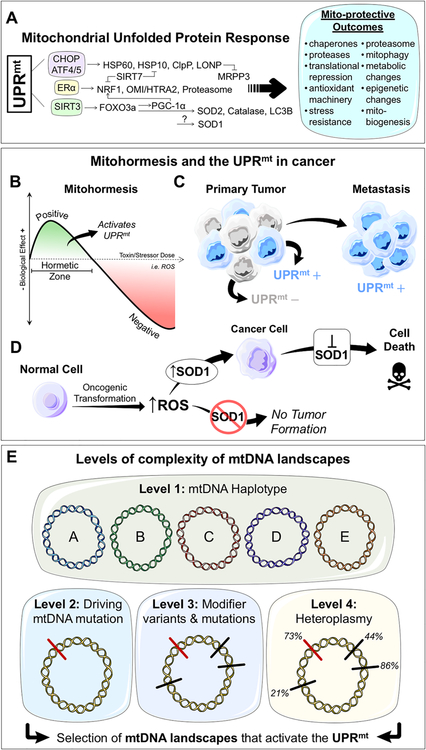Figure 2. The mitochondrial unfolded protein response, mitohoremsis, and mtDNA landscape complexity in cancer.
A. The mammalian mitochondrial unfolded protein response (UPRmt). Different axes of the UPRmt are activated in parallel by perturbations to mitochondrial stress leading to collective mito-protective outcomes. B. Dose response curve of a mitohormetic response to a given stressor or toxin (i.e. ROS). At low levels of toxin/stressor, within the hormetic zone, positive biological responses are seen – such as activation of the UPRmt. At higher doses, negative biological responses are seen. C. Within the primary tumor, UPRmt negative (−) and positive (+) populations can be identified. UPRmt+ populations are characterized by mitohormesis and show increased invasive and metastatic capacities. D. The role of SOD1, a member of the UPRmt, in cancer. Oncogenic transformation of a normal cell results in the increase of reactive oxygen species (ROS). In the absence of SOD1, tumor formation is blocked. SOD1 inhibition selectively kills established cancer cells. E. Levels of complexity of mtDNA landscapes in cancer. Level 1 of complexity is the mtDNA haplotype with its unique set of variants and mutations. Level 2 of complexity is the acquistion of a driving mtDNA mutation in cancer. This mutation will manifest differently given the mtDNA haplotype in which it resides. Level 3 of complexity is the additional variants and mutants gained. These additional mtDNA differences can act as modifiers of both the driving mutation and the mtDNA haplotype. Level 4 of complexitiy is heteroplasmy. The heteroplasmic frequencies of each driving mutation and modifier variants/mutations will also impact the effect of mtDNA on cancer. We propose that cancer cells will select mtDNA landscapes that activate the UPRmt to promote primary tumor formation and metastasis. (modified from LES LABORATOIRES SERVIER)™ available under a Creative Commons 3.0 Unported License.

